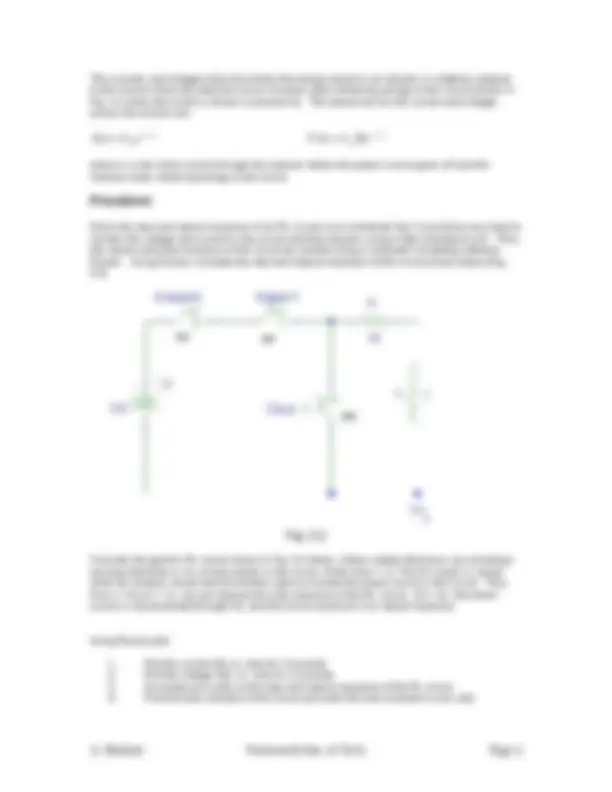



Study with the several resources on Docsity

Earn points by helping other students or get them with a premium plan


Prepare for your exams
Study with the several resources on Docsity

Earn points to download
Earn points by helping other students or get them with a premium plan
Community
Ask the community for help and clear up your study doubts
Discover the best universities in your country according to Docsity users
Free resources
Download our free guides on studying techniques, anxiety management strategies, and thesis advice from Docsity tutors
Material Type: Lab; Professor: Khabari; Class: CIRCUIT THEORY II; Subject: Electronics; University: Wentworth Institute of Technology; Term: Unknown 1989;
Typology: Lab Reports
1 / 2

This page cannot be seen from the preview
Don't miss anything!


Objective:
The expression for the inductor current indicates that the current increases from zero to a final value of Vs/R at a rate determined by the time constant = L/R Fig. 3. A. Khabari Wentworth Inst. of Tech. (^) Page 1
The currents and voltages that arise when the energy stored in an inductor is suddenly releases to the resistor when the external source of power stops delivering energy to the circuit (shown in Fig. 3.1 when the switch is thrown in position A). The expression for the current and voltage across the resistor are:
where Io is the initial current through the inductor before the power source goes off and the inductor starts releasing energy to the circuit. Procedure: Since the step and natural response of an RL circuit occur extremely fast. It would be very hard to monitor the voltage and current in the circuit and that requires using a high inductance coil. Thus, the natural and step response of the circuit are studied using a computer simulating software, Pspice. Using Pspice, simulate the step and natural response of the circuit shown below (Fig. 3.2) Fig. 3. Consider the generic RL circuit shown in Fig. 3.2 below. Unless stated otherwise, we will always assume that there is no current initially in the circuit. At the time t = 0, The S1 switch is closed while S2 remains closed and S3 remains open to include the power source in the circuit. Thus from t = 0s to t = 1s, we can observe the step response of the RL circuit. At t =1s, the power source is disconnected through S2, and the circuit would be in its natural response. Using Pspice plot: